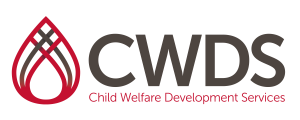CWDS Curriculum
Substance Abuse and Child Welfare Assessment and Case Management
Level: Advanced Practice – Lineworker, Supervisor
Credits: 6
Intended Audience: New and experienced line workers and supervisors
Intended Objectives:
- Identify the signs, symptoms and individual and family dynamics of the Illness of Addiction.
- Identify indicators of the impact of Addiction on Children.
- Identify the physical and behavioral signs of substance abuse including related paraphernalia.
- Identify elements of the assessment of parents suffering from the Illness of Addiction, including those suffering from Co-Occurring Disorders.
- Be exposed to Solutions Focused interviewing techniques for parents suffering from Addiction.
- Identify the service needs of Parents, Children and Families affected by Addiction.
- Identify and access resources for Parents, Children and Families.
- Demonstrate how to make appropriate case plans for this client population.
- Identify behaviors and signs that assist in measuring the birth parent(s) ongoing progress in their case plan and make appropriate court recommendations accordingly.
Topics Include:
- Assessing Substance Abuse issues in Child Welfare Families
- How Addiction impacts children
- Identifying physical and behavioral signs of substance abuse
- Discuss how “severity of impairment”, “appropriate intensity of treatment” and “measures of prognosis,” relate to child welfare assessments
- Assessing substance abuse and identifying Co-Occurring Disorders
- Use of Solution Focus interviewing techniques in working with persons who are addicted to substances
- Developing a customized service plan based on an assessment of substance abuse
- Identify services for parents children and families
- Measuring and monitoring progress in the case plan, when to modify the case plan
CalSWEC Competencies Addressed:
1.3 Student demonstrates the ability to conduct an ethnically and culturally competent assessment of a child and family and to develop an effective intervention plan.
2.2 Student is able to critically evaluate the relevance of commonly utilized assessment criteria and intervention models in terms of their usefulness with diverse ethnic and cultural populations.
3.6 Integrating knowledge of individual, family, and cultural dynamics, the student can recognize signs and symptoms of substance abuse in children and adults and assess its impact.
4.3 Student works collaboratively with biological families, foster families, and kin networks, involving them in assessment and planning and helping them access services and develop coping strategies.
4.4 Student demonstrates the ability to identify service/treatment plan requirements and to construct measurable objectives for the service plan.
5.5 Student demonstrates understanding of how the strengths perspective and empowerment approaches can positively influence growth, development, and behavior change.
Posted In:Substance Abuse



